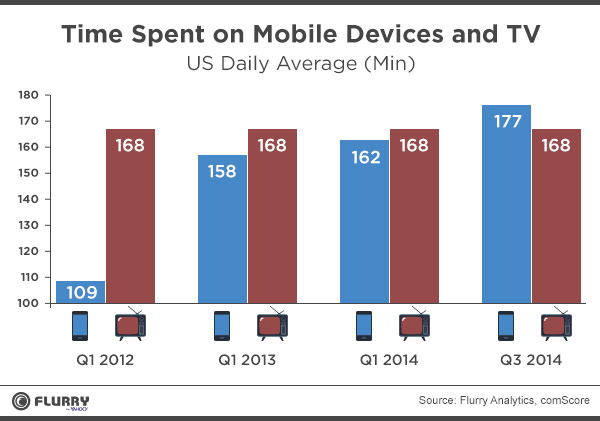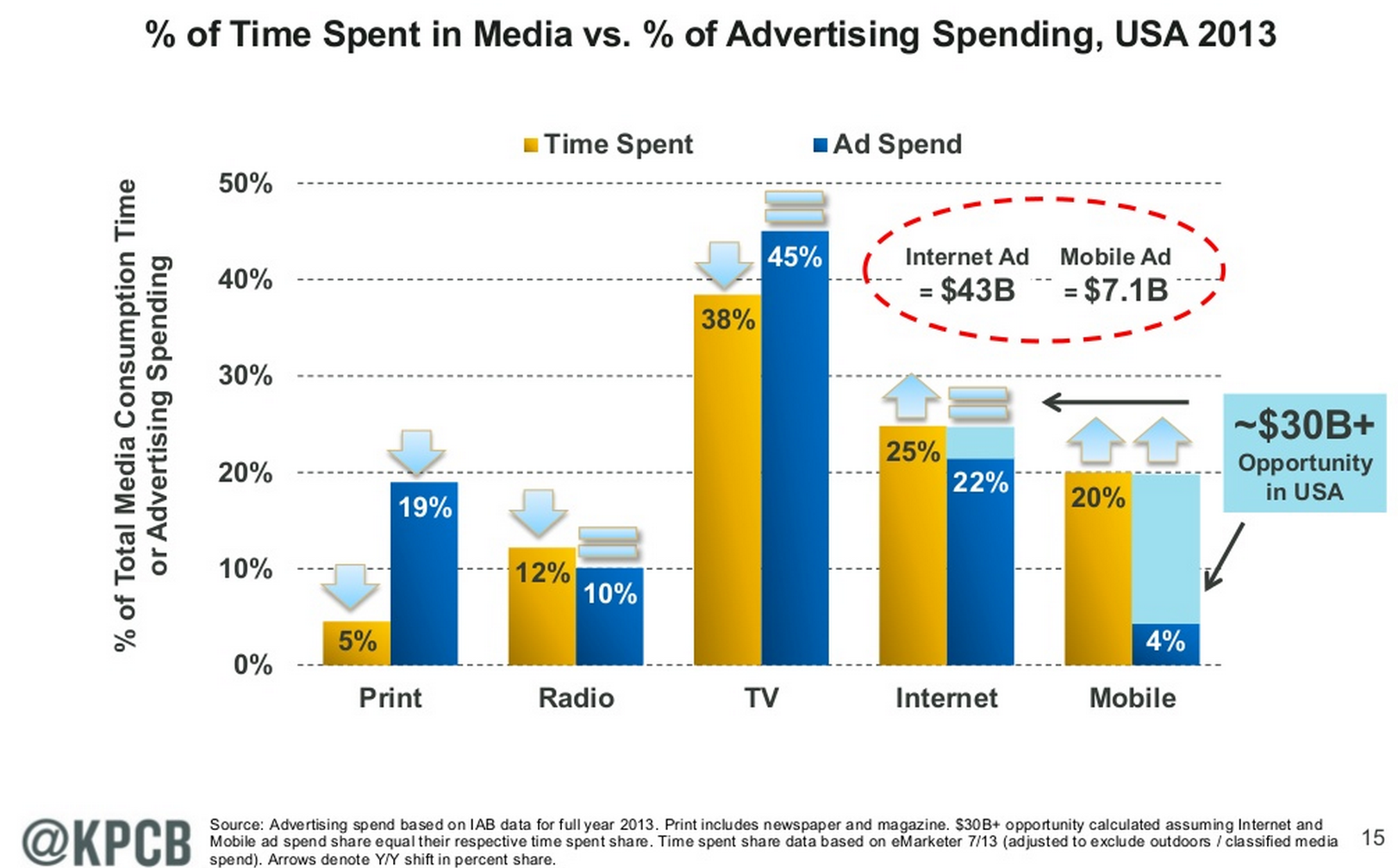Marketers think of smartphones and tablets as the “second screen,” places where people direct their attention during commercial breaks on TV. It may be time to reverse those distinctions.
People with access to a smartphone or tablet now spend an average of 2 hours and 57 minutes on them each day, says digital analytics firm Flurry, putting phones ahead of televisions as time-sucks. The old first screen on average gets about 2 hours and 48 minutes of attention each day, according to the Bureau of Labor Statistics. The mobile device emerges as an even bigger winner when you filter the data for dedicated users. Flurry clocks daily mobile device users at 3 hours and 45 minutes per day, compared with 3½ hours for daily television watchers.
An inflection point like this has clearly been coming. The amount of time that people spend watching TV has been flat for several years, while people continue to spend more and more time with apps. Flurry, which is owned by Yahoo! (YHOO), says app time has grown almost 10 percent in the past nine months alone.

Flurry can’t determine how much mobile apps are pulling people away from television, rather than just supplementing it. New media habits have essentially created more time in the day: People idly flip through content on their smartphones while halfway paying attention to whatever is playing on their televisions.
STORY: The Budget Mobile Era Arrives
The rise in time spent on mobile should eventually lead to a correction in the advertising industry, as Mary Meeker pointed out in her annual Internet Trends report. Theoretically, advertisers should spread their dollars across different kinds of media at roughly the same proportion as customers spend their time. Right now that’s not true, as the chart below shows. Meeker thinks that mobile and Internet advertising have about $30 billion worth of growth to come just from the reallocation of ad dollars to account for changing media habits. Cable-TV networks are seeing the growth of their advertising businesses slow.

In reality, it’s not quite as simple as matching the ad dollars to the amount of time spent. Digital advertisers tend to look for immediate transactions. This is the whole point of Google’s (GOOG) search ads: Suitsupply wants its ad to show up at the exact moment someone starts searching for new clothing. But companies still see television as the place for brand marketing, including the memorable ads that companies pay millions to air during the Super Bowl. “If you ask people, ‘How many search ads do you remember?’ the answer is probably zero,” says Simon Khalaf, Flurry’s chief executive.
Khalaf thinks that video ads on mobile will eventually change that. But it will take time. So-called old media is losing the attention of the American public far faster than it’s losing advertising dollars. Print media, for instance, still draws 19 percent of spending from advertisers, even though people spend only 5 percent of their media time with print products.
Via Businessweek.
Advertisement
Learn more about Electronic Products Magazine





